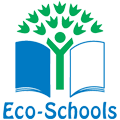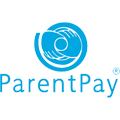Phonics
"Phonics is making connections between the sounds of our spoken words and the letters that are used to write them down."
At Sharneyford, early reading is taught using Little Wandle Revised Letters and Sounds scheme. During their phonics sessions, the children are systematically taught the sounds of each letter or combination of letters that help build words. As your children begin to learn letter sounds and begin to blend words, your child will have access to reading books. These books are numbered. These correlate directly to the sounds that your child knows. Children will move onto higher numbers as they are introduced to more letter sounds. The children are unable to move onto other books if they have not yet been introduced to the sounds that will be inside these books.
Within our phonics lessons, the children are usually taught four new sounds each week with a revision lesson on Fridays. We teach the children pure sounds. When we say the sounds we do not include 'ugh' at the end of these sounds. For example we will say sssss not s-ugh. Information on the correct pronouniation can be found on the videos at the bottom of the page. Please use these as a reference tool or if you need more support, please do not hesiste to contact school in relation to this.
We use specific resources to help these sounds stick in your child's long term memory.
Mnemonics - these are images, rhymes or acronyms that help children remember sounds. All our individual letters have images and a link word such as a jellyfish for j.
Pronunciation phrases - all children are taught the correct pronunciation using phrases. These help the children to remember the way in which to use their mouth, teeth and tongue to make the correct sound.
Formation phrases - all children are taught the same formation phrase. These are then used daily when children are writing both in phonics and other lessons to ensure that the correct formation is reinforced regularly.
Catchphrase - these are used to help the children to remember sounds that have 2 or more letters such as 'sheep in a jeep' for ee.
All parents will be given a copy of these at the beginning of the school year. Should you require more than one copy these are available on request or can be downloaded from the links below.
Terminology
As your children begin their phonics lessons, they will be encouraged to use the correct terminology. These words are used by all staff within school in all phonics lessons and so your child might use these at home. Using the correct phrases at home can support your child further with consistency in their learning. The terminology used is as follows:
Phoneme - the smallest unit of sound that can be identified in words. These are sometimes referred to as 'sounds'.
Grapheme - a letter or group of letters that are used to represent a particular phoneme when writing
Digraph - a grapheme that uses two letters to make one sound (ai, ee, or)
Trigraph - a grapheme that uses three letters to make one sound (igh, ear)
Split vowel digraph - a diagraph representing a vowel sound where the two letters are split by an intervening consonant (a_e as in take)
Blend - to combine individual phonemes into a word.
Segment - to identify each of the individual sounds in a word working left to right.
Tricky words - high frequency words that, although decodable in themselves, cannot be decoded by children using the grapheme-phoneme correspondence or sound-letter relationship (GPCs) they may have been taught up to that point.
Assessments
Children are assessed regulary to ensure that their progress is monitored and also any difficulties or gaps are quickly identified. Should your child have any difficulties or through assessments, we notice some gaps in their learning, your child will access 'keep up' sessions. You will be notified of any difficulties or gaps that your child has as soon as assessments identify these. This allows you to be able to support your child and know that your child is recieving timely support when they require it. Should your child require additional support, this will be communicated to you and you will be notified of what additional support your child will be having within the school day or week.
Reading books
The most important thing you can do is to read with your child and help them to develop a love of reading. Your child will bring home a reading book. This books is a 'learning to read' book which will be given at the right level according to their progress in phonics. Children are encourgaed to re-read books for fluency and understanding. Your child will also have a library book which will be a 'book to share'. These books are changed weekly on a Monday. These books are SO important in fostering a love of reading with your child and enjoying shared time together. This will help develop their WILL to read. Please read with your child as often as you can - once a day if possible.
Videos
The videos below allow you to learn more about how phonics is taught within school. Please feel free to browse these or for more information, please do not hesitate to speak to a member of staff who will be happy to support you further.






